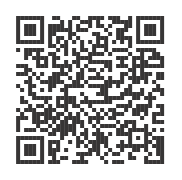

The first milk you make during pregnancy and just after birth is called colostrum. It is thick and golden yellow in color. This milk is very nutritious and has antibodies to protect your baby from getting sick. It also helps your newborn’s digestive system to grow and function well.
About 3 to 5 days after birth, colostrum changes into mature milk. Mature milk is white and looks thinner than colostrum. It has just the right amount of fat, sugar, water, and protein to help your baby grow.
“I decided to breastfeed for the health benefits — not just for me, but for my baby, too. Breastfeeding gives my baby all the nutrients he needs.” – Danielle, new mom
For many babies, human milk is much easier to digest than formula. Unless your baby’s healthcare provider tells you to supplement with formula for medical reasons, it’s best to feed baby human milk.
Breastfeeding may seem like it takes more effort than formula feeding, but it can make life easier once you and your baby settle into a good routine.


Human touch is important to newborns. It helps them feel secure, comfort, and love. Breastfeeding mothers also benefit from this closeness. The skin-to-skin contact helps your milk flow and can calm you as you breastfeed.
“Breastfeeding is beautiful. The bond it creates is stronger than I dreamed it could be.” – Anna, breastfeeding mom
“Building trust with my newborn is the best feeling in the world.” – Rosa, breastfeeding mom
“Breastfeeding is something that only I can provide for my growing baby. It’s such a special bond.” – Marianna, breastfeeding mom
Your baby can smell you and knows the unique scent of your milk.
Mothers who breastfeed recover from childbirth more quickly and easily.
They also have a lower risk of:

Many women who breastfed have said it helped them get back to their pre-pregnancy weight more quickly. Exclusively breastfeeding can burn up to 600 calories per day.
Install this web app on your iPhone: tap ![]() and then Add to Home Screen.
and then Add to Home Screen.
Cross-Cradle Hold
This hold is useful when:
Clutch or “Football” Hold
This hold is useful when:
Cradle Hold
This hold is useful when:
This hold is useful when: